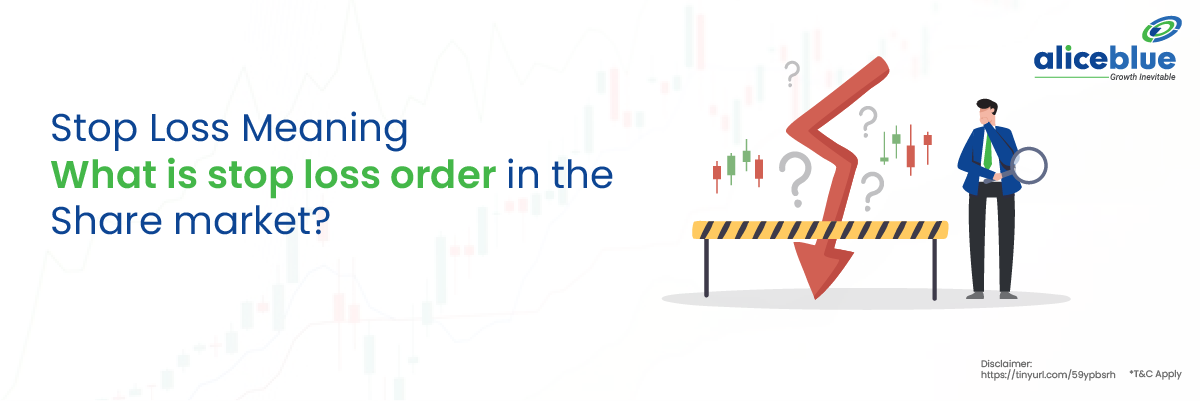A Stop-loss order is a function that helps an investor to limit the losses in case the trade is going against their predictions and expectations. For example: if an investor buys a stock at Rs 100, he/she can put a stop-loss order at a lower price to prevent heavy losses.
In this example, the investor can put a stop loss at Rs 97. Therefore, if the stock price starts falling, the stop-loss function will sell the stock the moment it hits Rs 97. This is regardless of the investor watching the stock or not.
On the contrary, if there was no stop-loss order placed, and the investor was not aware that the stock was falling down, it could have gone as low as Rs 80 or Rs 75 by the time investor would have caught the wind of the downtrend.
Content:
- Trigger Price in Stop Loss
- Types of Stop Loss Order
- Advantages of Stop Loss Order
- Disadvantages of Stop Loss Order
- Quick Summary
Let us try to understand with a real life example
Ever been to a circus or witnessed gymnastics games? While they are fun to watch, one can’t help but notice the safety measures in place for professionals. Gymnasts at the Olympics are among the best in the world, yet they get the protection of cushions on the floor, nets down below, etc.
Why? Even the best in the world can have a bad day. Even they can fall and lose a lot more than they imagine. That is the role of the safety net. To stop loss. Loss of limb, loss of life, and loss of hope.
So is there anything in the stock market that does the same? Yes, the stop-loss function does the same for investors. Read on because this may be a more crucial tool than your analytical ones.
Trigger price in a stop-loss order
The trigger price in stop-loss order is the price at which you want to sell the stock. If the stock is bought at Rs 100 and the trigger is set at Rs 95, then that is the trigger. The moment stock hits Rs 95, your order will be executed, and the position will be closed.
Types of stop-loss orders
There are several types of stop-loss orders:
- Trailing Stop Loss Order
- Stop Loss and Market Order
- Stop loss and Limit Order, etc.
Let’s deal with them one by one.
Trailing Stop-Loss Order
The Trailing stop-loss order can be termed as the advanced version of a stop-loss order. Small recap, in stop loss, the investor bought a stock at Rs 100 and set a stop loss at Rs 90. The order will be closed if the stock falls to Rs 90.
Now imagine if this can be done in terms of percentage. Take the same stock price. An investor bought it at Rs 100, now, instead of marking a stop loss at Rs 90, the investor marks a trailing stop loss at 10% of the market price. This means if the stock falls 10%, the order will be executed.
In this case, it will be sold at Rs 90. So what’s the advantage of trailing stop loss? It also works when the stock price rises. Say the stock shoots up to Rs 150. Now, the trailing stop loss will adjust automatically to the new stock price. The price of the stop-loss order will change to Rs 135. The best part is you don’t have to adjust it yourself.
Stop-loss limit order
It is very similar to stop loss, but it comes with range limits. So, a stock is bought at Rs 100, and the trigger price is set at Rs 90. But in this case, the investor needs to set a limit as well, and the range needs to be lower than the trigger.
So, let’s say the limit is set at Rs 89. Now, the moment stock hits Rs 90, the order is triggered and sent to the exchange. But, the stock will be sold at the next available price lower than Rs 90 but higher than Rs 89. It can be Rs 89.75, Rs 89.60, or also Rs 89, but not lesser than Rs 89.
However, if the market falls rapidly, then the limit order may never get executed. From Rs 90, it may fall directly to Rs 85, and hence the stock remains unsold. Therefore it is not a very handy tool on volatile market days.
Stop-loss market order
Stop-loss market order is the case when you set a price to prevent losses and get what you expect, well almost.
Taking the same example, to prevent the loss, if the investor sets the stop loss at Rs 90 and the stock price hits Rs 90, the order will be squared off immediately.
Learn the difference between Market order and Limit order here!
Advantages of stop-loss order
- The very basic, it helps traders minimise losses by the ways discussed above, Since stop loss works on automation, the investor is not required to be glued to the trading terminal.
- Cuts the emotion out of the picture. The investor may be tempted to give the stock time to rebound, which may not happen. Hence, stop loss prevents that and sells at whatever price is set.
- Using trailing stop loss, you can lock-in your profits as well.
Disadvantages of stop-loss order
- It sells on the smallest of fluctuations and on volatile days, it can be risky.
- Prevents from taking higher risk. Sometimes you need to listen to your gut and with stop loss in place, you can’t do that.
- In volatile market days, the order may never get executed.
We hope that you are clear about the topic. But there is more to learn and explore when it comes to the stock market, and hence we bring you the important topics and areas that you should know:
Quick Summary
Stop loss is definitely a safety net. But it is only as strong as your knowledge about the market behaviour. While it is good to have it, the disadvantages listed above need to be kept in mind. You can’t always rely on stop loss and hope that you will remain in profit. Markets are moody. Hence prudence is advised.







